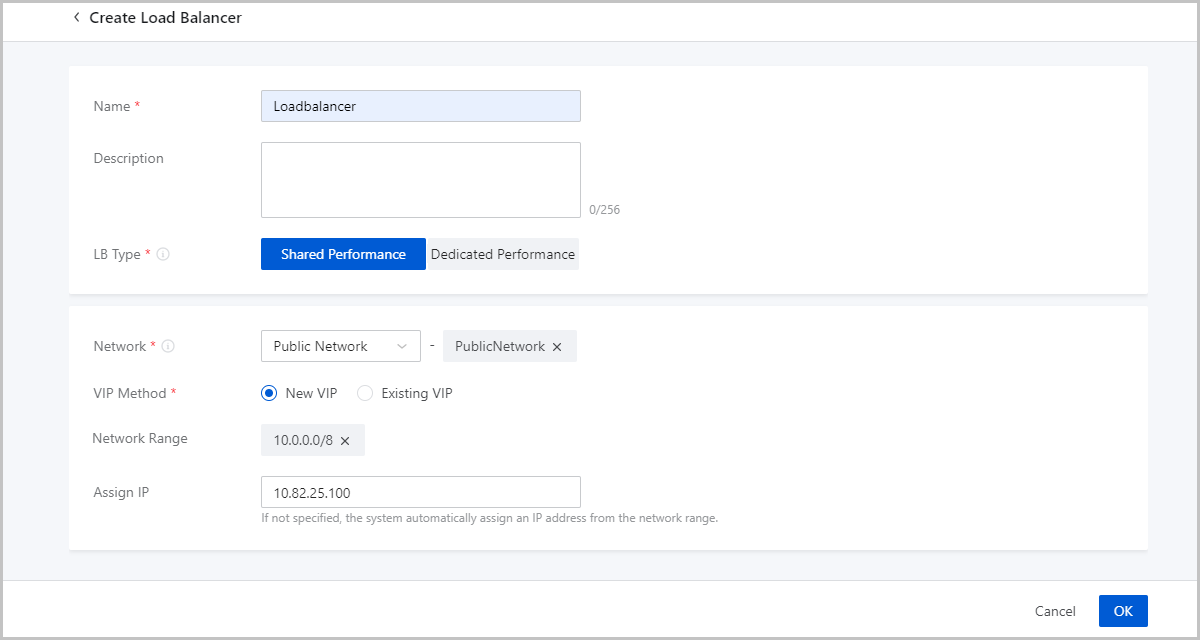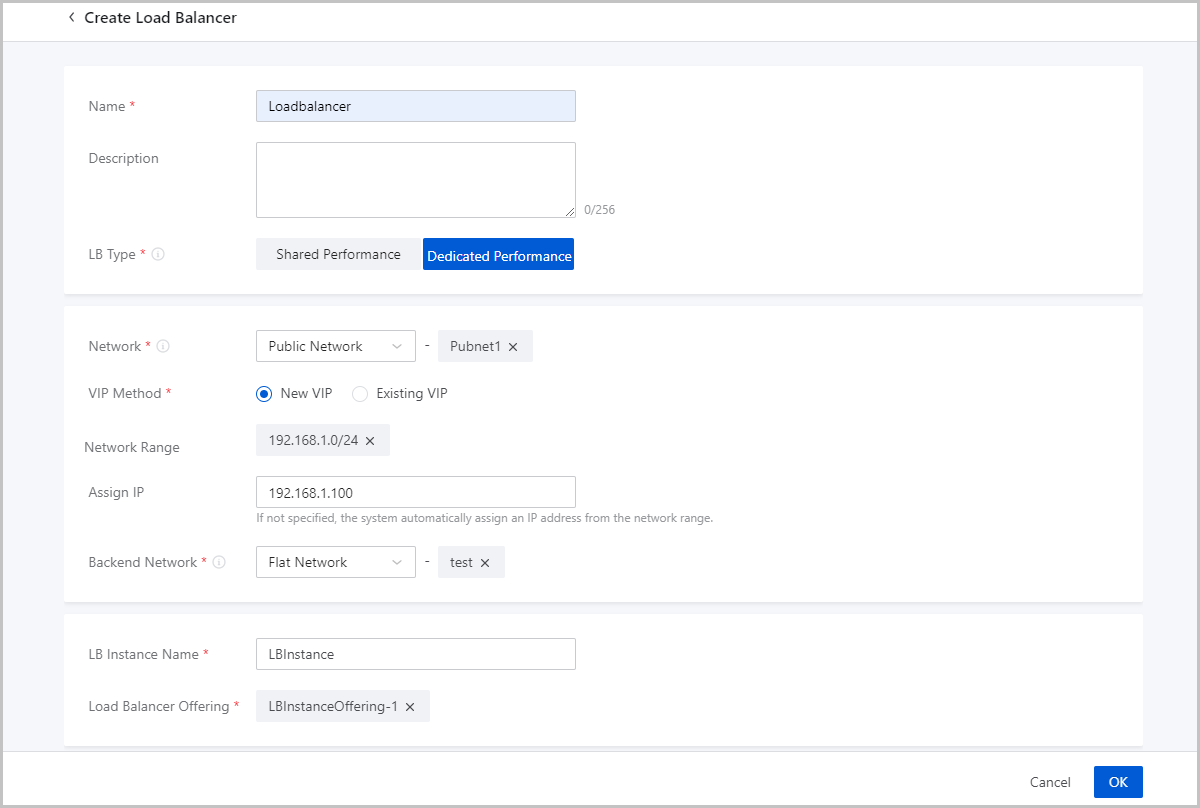Create a Load Balancer
On the main menu of ZStack Cloud, choose . On the Load Balancer page, click Create Load Balancer. The Create Load Balancer page appears.
The following lists the two load balancer (LB) creation scenarios:
- Create a shared-performance LB
- Create a dedicated-performance LB
Create Shared-Performance LB
On the displayed page, set the following parameters:
- Name: Enter a name for the LB.
- Description: Optional. Enter a description for the LB.
- LB Type: Select Shared Performance.
- A shared-performance LB distributes traffics to backend servers by using a VPC vRouter.
- If the VPC vRouter are providing multiple services, the load balancing service needs to share the performance of the VPC vRouter with other services.
- Network: Select a network as the
frontend network of the LB. You can select a public network or VPC
network.
Requests from the frontend network are distributed by the load balancer to backend servers based on a specified policy.
- VIP Method: You can create a virtual IP address (VIP)
or use an existing VIP to provide load balancing services.
- New VIP: If you create a
VIP, you can set the following parameters:
- Network Range: Optional. Select an IP range.
- Assign IP: Optional. Specify a VIP. This parameter is available only after you select an IP range. If left blank, the system automatically assigns a VIP.
- Existing VIP: If you use an existing VIP,
you can set the following parameters:
- VIP: Select an existing VIP. You can
select a custom VIP or a system VIP:
- Custom: Select a VIP that you create. You can select a VIP in a public network, VPC network, or flat network.
- System: Select a system VIP. After a VPC vRouter is created, the system creates a VIP in the L3 network that is associated with the VPC vRouter. The automatically created VIP can be a public network VIP or a flat network VIP.
- VIP: Select an existing VIP. You can
select a custom VIP or a system VIP:
- New VIP: If you create a
VIP, you can set the following parameters:

Create Dedicated-Performance LB
On the displayed page, set the following parameters:
- Name: Enter a name for the LB.
- Description: Optional. Enter a description for the LB.
- LB Type: Select High Performance.
- A dedicated-performance LB distributes traffics to backend servers by using LB instances.
- A load balancer instance is a custom VM instance dedicated to providing load balancing services.
- Network: Select a network as the frontend network of
the LB. You can select a public network, flat network, or VPC
network.
Requests from the frontend network are distributed by the load balancer to backend servers based on a specified policy.
- VIP Method: You can create a VIP or use an existing
VIP to provide load balancing services.
- New VIP: If you create a VIP, you can set the
following parameters:
- Network Range: Optional. Select an IP range.
- Assign IP: Optional. Specify a VIP. This parameter is available only after you select an IP range. If left blank, the system automatically assigns a VIP.
- Existing VIP: If you use an existing VIP,
you can set the following parameters:
- VIP: Select an existing VIP. You can
select a custom VIP or a system VIP:
- Custom: Select a VIP that you create. You can select a VIP in a public network, VPC network, or flat network.
- System: Select a system VIP. After a VPC vRouter is created, the system creates a VIP in the L3 network that is associated with the VPC vRouter. The automatically created VIP can be a public network VIP or a flat network VIP.
- VIP: Select an existing VIP. You can
select a custom VIP or a system VIP:
- New VIP: If you create a VIP, you can set the
following parameters:
- Backend Network: Select a network as the backend
network.
- If you specify a public network as the frontend network, you can specify a flat network or any one of the VPC networks of the VPC vRouter to which the public network is attached as the backend network.
- If you specify a flat network as the frontend network, you must specify the same network as the backend network.
- If you specify a VPC network of a VPC vRouter as the frontend network, you must specify the same network as the backend network.
- LB Instance Name: Enter a name for the LB instance.
- Load Balancer Offering: Select a LB offering.

After you create a LB, you can add a listener and associate VM NICs with the listener to make the LB take effect.